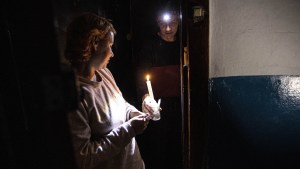Moviegoers are well acquainted with the horrors of the Holocaust, having been served a rich variety of films over the years portraying the plight of European Jews in the 1930s and 1940s. Schindler’s List, The Pianist and a slew of other cinematic endeavors have helped establish the Shoah in the public consciousness as an evil that stained the 20th century like no other event in European history.
But there is little cinematic history when it comes to other genocides of the 20th century, and, consequently, knowledge of those evils is mostly limited to the community of descendents of the targeted peoples. When Pope Francis and other world leaders marked the centennial of the Armenian Genocide a couple of years ago, it was news to many people that the Ottoman government had killed about 1.5 million innocent Armenians, mostly Christians, between 1915 and 1917.
Likewise, annual commemorations of the “Holodomor” have been limited to gatherings of Ukrainians in their native land and the diaspora, whose ancestors witnessed Joseph Stalin’s 1930s-era forced famine in the Breadbasket of Europe.
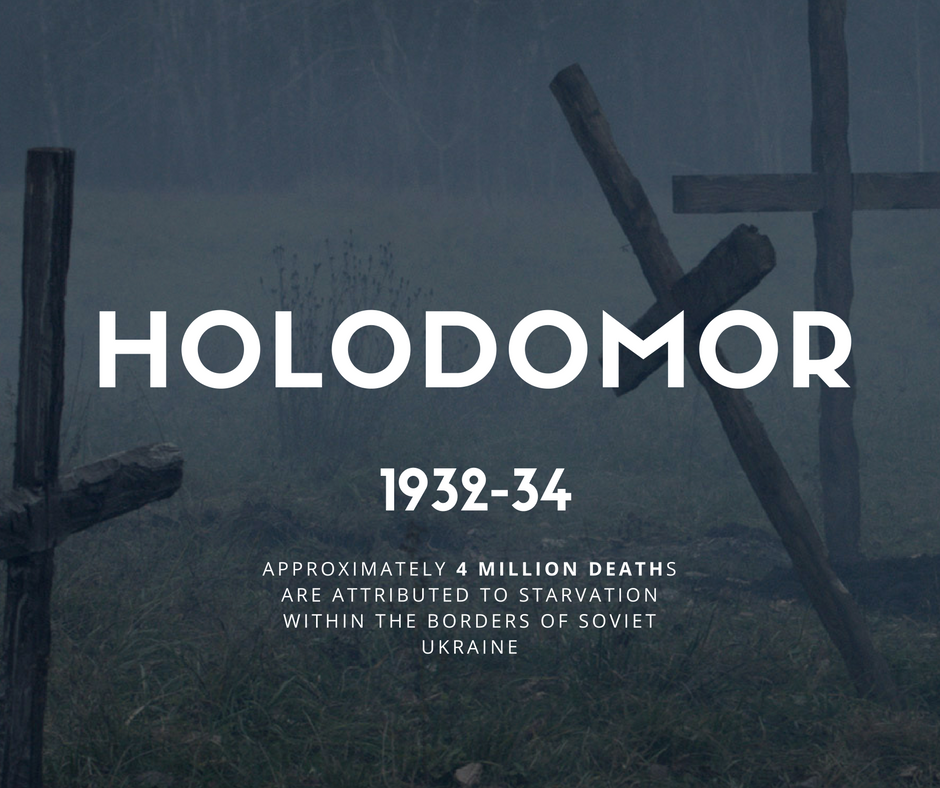
But Bitter Harvest, a 2017 film starring Max Irons, Samantha Barks, Terence Stamp, and Tamer Hassan, fills the cinematic void.
Rather than sending Ukrainians to forced labor and death camps, as Hitler did with Jews and other “non-Aryans,” Stalin pursued an economic policy that pretty much let Ukrainians die on their own land and in their own homes.
“And in the process he tried to destroy the Ukrainian nation, killed off the intelligentsia and the leadership of the party, replaced it with their party apparatchiks, the Russians,” said Toronto-based financier Ian Ihnatowycz, who put up the entire $20 million to make the film. “And he destroyed the Church, shut down all the churches, arrested initially and then executed probably about 1,600 priests. Three hundred bishops were arrested, some sent to Siberia, where they probably died and many were executed. Because it was officially an atheist state.”
The entire ordeal left at least 3 million dead (some put the figure higher). The Ukrainian word Holodomor means “death by hunger.”
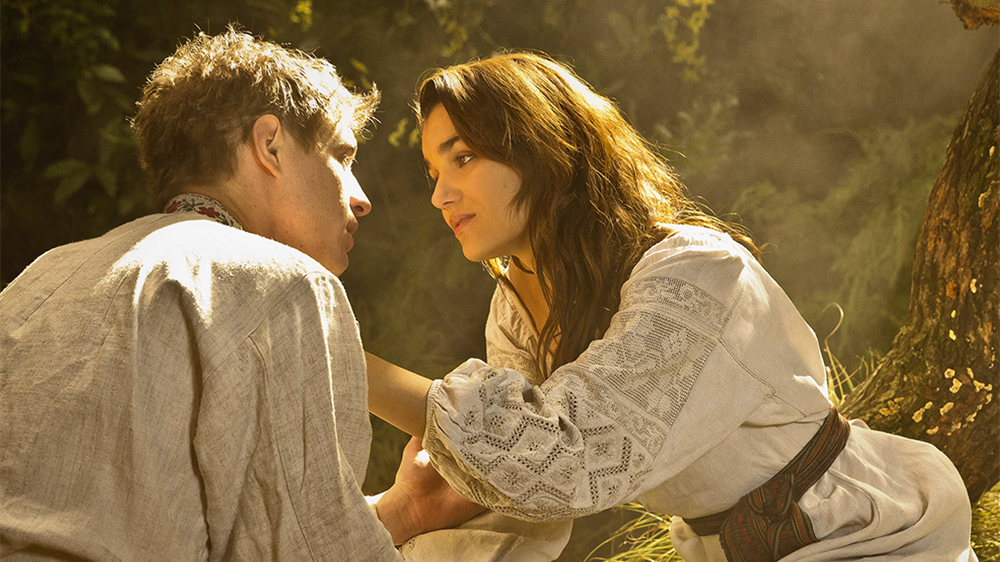
Bitter Harvest is a fictional love story, but the tale of Yuri, a young artist played by Irons, and his childhood sweetheart, Natalka, is set against a background that is all too real in its historicity.
“Although my character is fictitious it’s actual real life accounts of people who went through this,” said Barks, who plays Natalka, in a 2017 interview.
Ihnatowycz, whose family fled Ukraine in the 1940s, recognized that while there have been a few documentaries and some Ukrainian-language films portraying the Holodomor, there have not been many, or perhaps any, English-language features telling the tragic story.
When actor and screenwriter Richard Bachynsky-Hoover approached Ihnatowycz with a script, the financier-philanthropist was intrigued. He “understood the importance of telling the story of this terrible famine genocide to a much broader global audience,” he said. “I wanted to portray it in a way that touched human sensibilities so that audiences could experience the emotion of what happened in Ukraine.”
Ihnatowycz recruited director George Mendeluk, whose own Ukrainian mother survived the Stalinist starvation policy before meeting her husband in Germany and fleeing with young George to Canada. Inspired by their experiences, Mendeluk, in collaboration with Hoover, re-wrote the script.
“My mother would tell me horror stories about friends who died,” Mendeluk said in an interview. “She would go to school, and she would see kids waiting to go to school or trying to go to school but being too weak to make it to school, and then on the way back she’d see them lying on the sidewalk dead. Death was everywhere.”
During the film, Natalka sings a lullaby that Mendeluk remembers his own mother singing to him when he was a child. It was one of many examples of deep personal connections that cast and crew shared with the history they were depicting. Bitter Harvest was filmed near Kyiv, and being on location had an emotional impact on some of the actors, as well as locals working on the production. Barks said she was shaken by the experience of filming on historically accurate sets.
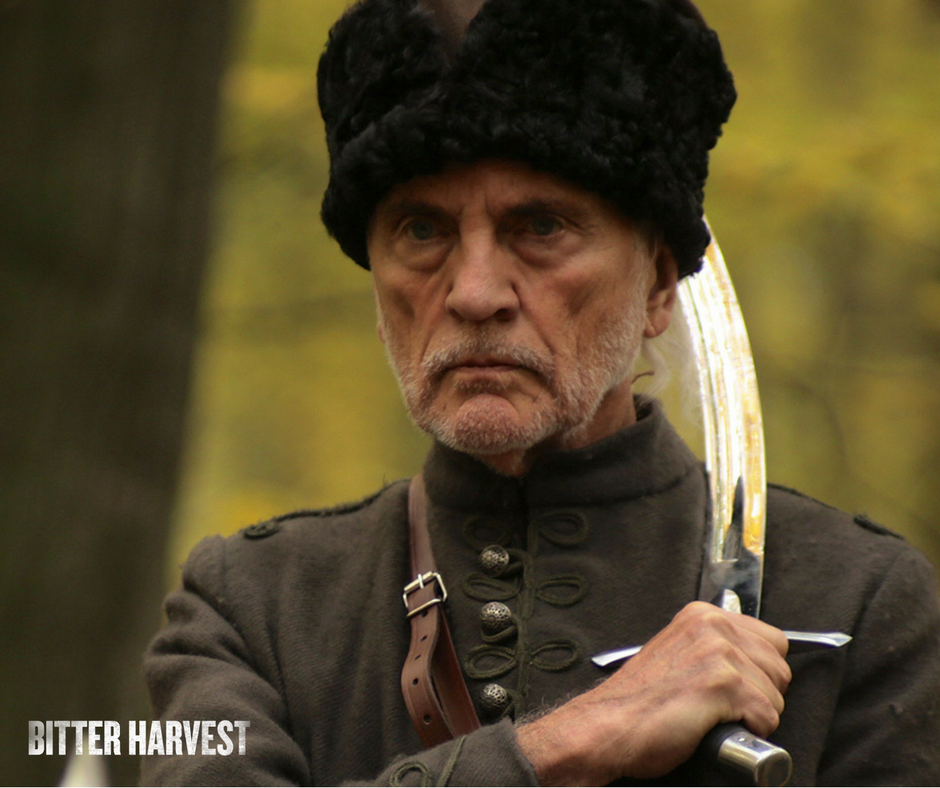
“When we filmed the scene where Tamer [Hassan], as Sergei, comes into the village shooting people, I learned the vehicles on the set were the actual trucks used to transport bodies in the 1930s. Lucy Brown, who plays Olena, and I got the shivers realizing, ‘this really happened!’ It’s heartbreaking and you can’t help being moved.”
She and other lead actors in the film, however, admitted in interviews that they were not aware of the history prior to becoming involved in the project.
“What happened in Ukraine in 1932-1933 was unknown to me, and I’m someone who, if asked if he has a fairly good grasp of 20th-century history, would like to say yes,” said Irons, the son of British actor Jeremy Irons.” But Stalin so effectively kept what happened there under wraps that it wasn’t until 1991 that good quality information about what happened started to come out.”
Not so for the Ukraine location crew. Ihnatowycz noted that virtually every Ukrainian working on the set knew of a family member who had suffered during the Holodomor. “It was very emotional because we sometimes filmed scenes similar to stories they’d all heard from their parents and grandparents,” he said.
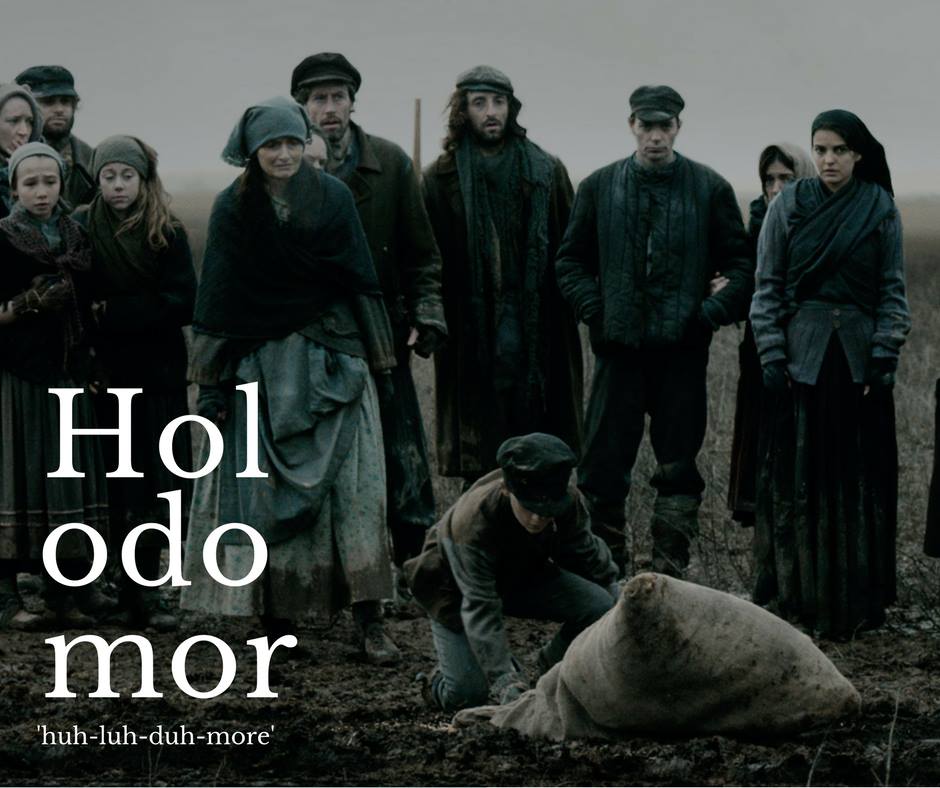
As it turns out, there was a current-events impact during filming as well. The movie was shot three days before Ukrainian citizens launched a wave of protests known as Euromaidan in late 2013. The dramatic events resulted in the resignation of Moscow-backed President Viktor Yanukovych.
“We had to be very careful because Yanukovych was one of those people who denied that the Holodomor ever happened,” Ihnatowycz said. “We were very quiet about the subject of Bitter Harvest. We were concerned the authorities might shut us down before we could finish filming.”
As Ukrainians face a bitter winter with a severely damaged infrastructure, due to the Russian invasion that began in February, and as the world commemorates the 90th anniversary of the Holodomor this Saturday, Bitter Harvest can help provide historical background for an understanding of Ukraine’s place in history.

